| “鼻子山”及其它的自然历史变迁_01 |
| 送交者: 克利西亚 2011年10月29日23:03:49 于 [摄友部落] 发送悄悄话 |
|
“鼻子山”及其它的自然历史变迁_01 引子:今天与朋友们闲逛卡尔加里的大“鼻子山”,号称CALGARY CITY的“出气口”, 随便拍了几张照片(见下)。聊聊天,谈谈吃鹿茸的滋味。 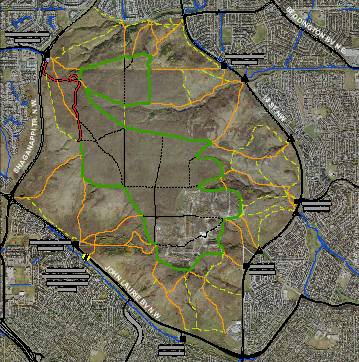 看到今日的“鼻子山”,这个北美百万人口大都市里可能是唯一没有开发利用的城 市中心大野地,引起我的好奇心?为什么这么重要的一块“黄金宝地”竟得以存留 至今? 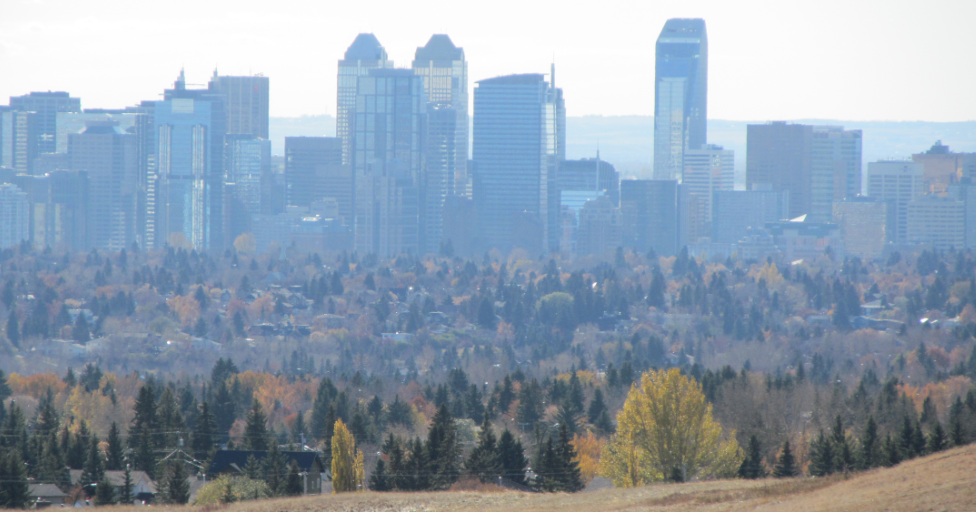 P1 历史见证: 我网上GOOGLE了一下。其结果如下。 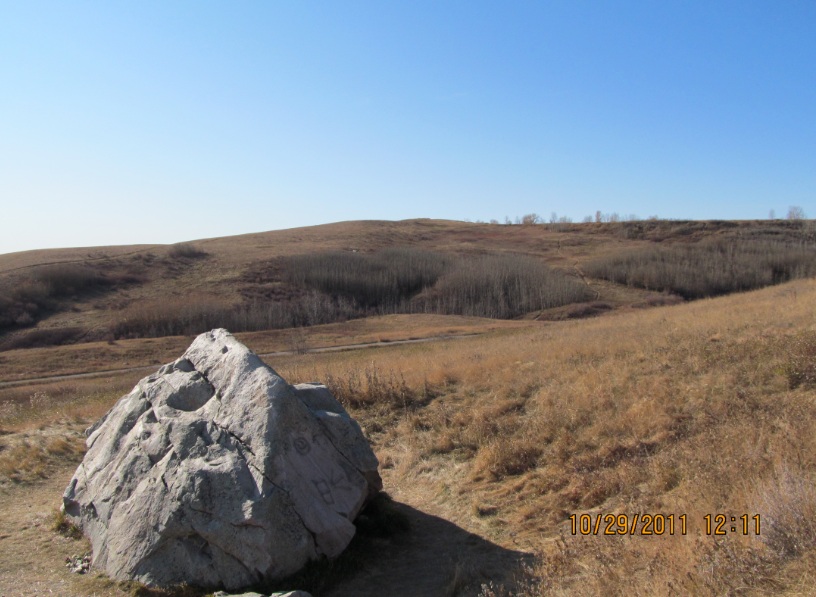 P2 “For millennia, Nose Hill stood silent vigil as Glacial Lake Calgary receded and a river surging out from the mountains carved its way through the old lake bottom. Over the centuries that followed, the hill witnessed a succession of people sculpting a unique history within and around the Bow River Valley. Many of those people visited the Nose Hill itself, and its immediate surroundings. 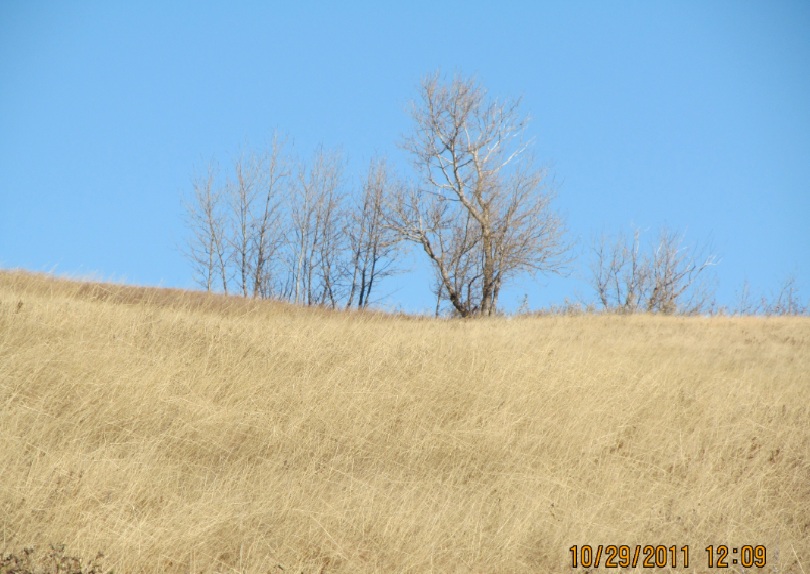 P3 Exposed to the drying and warming effects of the recurrent Chinook winds, Nose Hill long provided favourable wintering grounds for bison herds which, in turn, attracted people to the hill's grassy slopes. The park today contains numerous tipi rings - circles of stone once used to weigh down the conical-shaped skin dwellings of plains bison hunters. Also within the perimeters of today's park are ancient tool-making stations, a stone cairn, and evidence of bison kills conducted long ago. In 1900, one Euro-Canadian settler in the Nose Hill area described the archaeological residue below the cliffs of the coulee by McPherson Creek as a bone bed nine feet thick and an acre in extent. Establishing the tribal identities of all the people who left archaeological evidence on and around Nose Hill is virtually impossible. Most of the more recent sites, however, probably belonged to the Peigan, who dominated the territory in the vicinity of the Bow Valley when the Europeans first appeared. 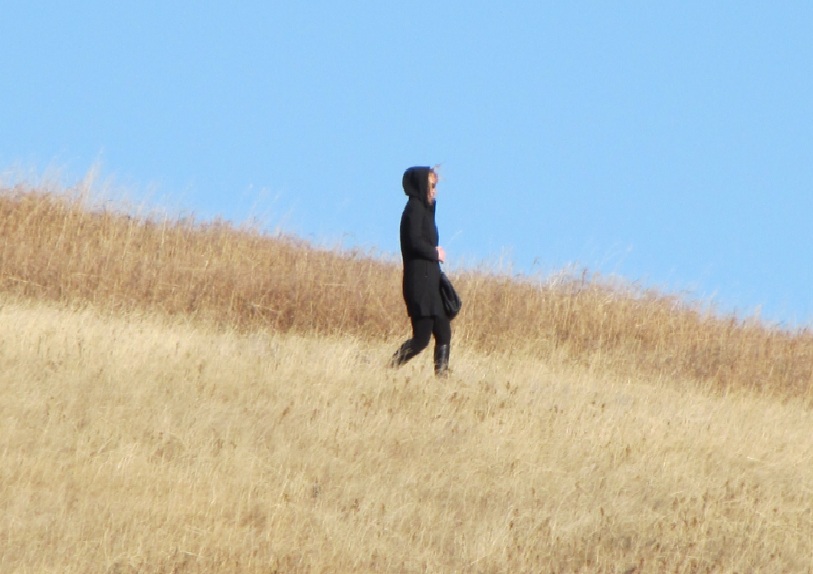 P4 Explorer and Hudson's Bay Company (HBC) trader David Thompson wintered at a Peigan encampment on the Bow River in 1787/8, and in 1800 returned to the area as a North-West Company employee. In his journal for the year, Thompson made specific note of Nose Hill. Eight years earlier, another well-known trader, HBC man Peter Fidler, also recorded an excursion to the hill with Peigan guides. The details of Fidler's journal entry illustrate well how dramatically the region's warm Chinook winds can affect the cold temperatures that characterize winters in southern Alberta. The temperature on the December day of Fidler's visit to Nose Hill was a balmy 14 degrees Celsius (58 degrees Fahrenheit). 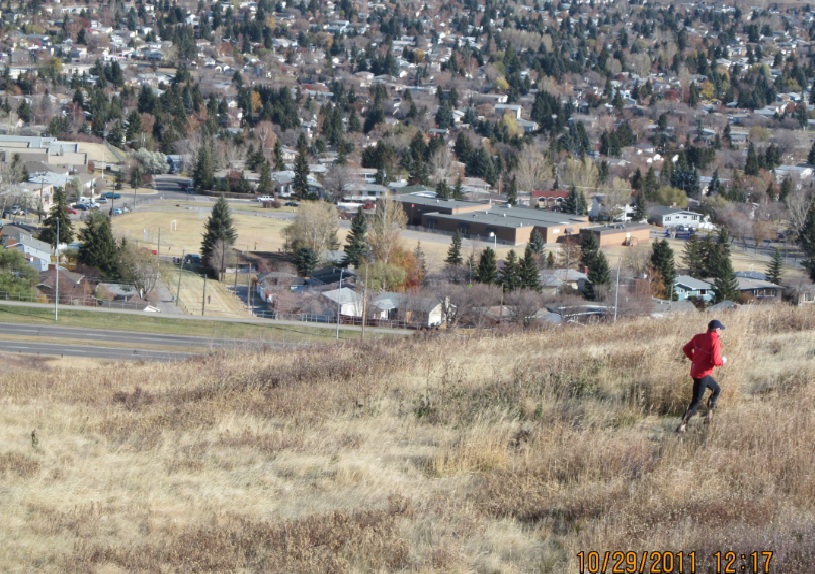 P5 John and George McDougall, Methodist missionaries, experienced more typical winter weather when they traveled to Nose Hill to hunt bison some four decades later. En route back to their hunting camp on the bitterly cold night of January 24, 1876, the elder McDougall, George, lost his way. A savage snowstorm delayed efforts to locate the missing man. On February 6, a search party finally discovered McDougall's frozen body on the east side of Nose Creek. 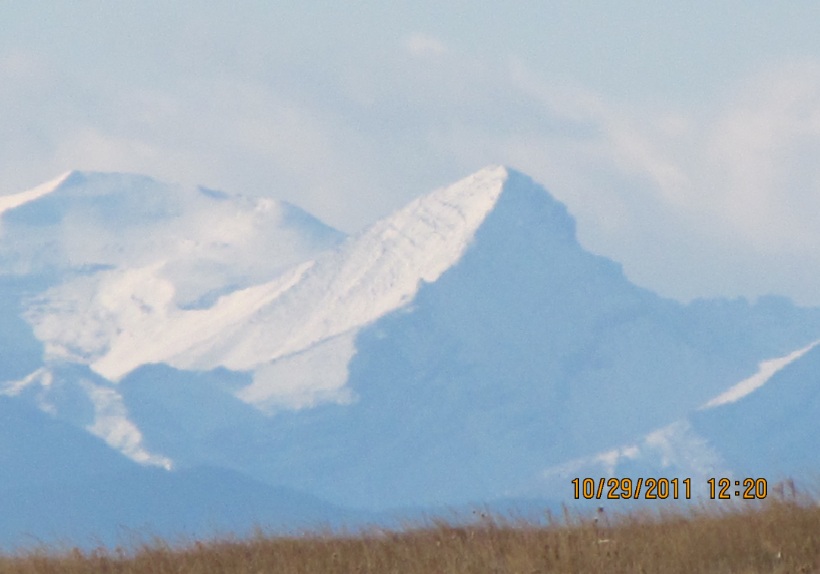 P6 Names currently associated with topographical features in and near Nose Hill Park reflect the impact of the European newcomers and European trade goods on the Peigan. For example, Spy Hill, the westward extension of Nose Hill, derived its present name from the aboriginal practice of communicating with distant colleagues by flashing European trade mirrors from elevated locations. Other effects of the Europeans' arrival were more insidious. The six bison that the Methodist missionaries shot during their ill-fated hunting excursion were mere remnants of southern Alberta's once vast buffalo population. By 1879, the bison herds had vanished from Nose Hill. A new chapter of local history had begun. A fledgling Euro-Canadian community, Fort Calgary, had appeared in the valley beneath Nose Hill. The area around Nose Hill itself played a significant economic role in Calgary' s subsequent physical transformation from police fort to prairie city. Much of the sandstone used to construct the imposing public buildings that became Calgary's hallmark after 1886 came from quarries local entrepreneurs operated on Nose Creek. Stone from the J A Lewis quarry provided the entrance to the Imperial Bank and part of the new city hall erected in 1909. Masons used materials carted into the city from Nose Creek to build James Short School and Calgary's old courthouse as well. 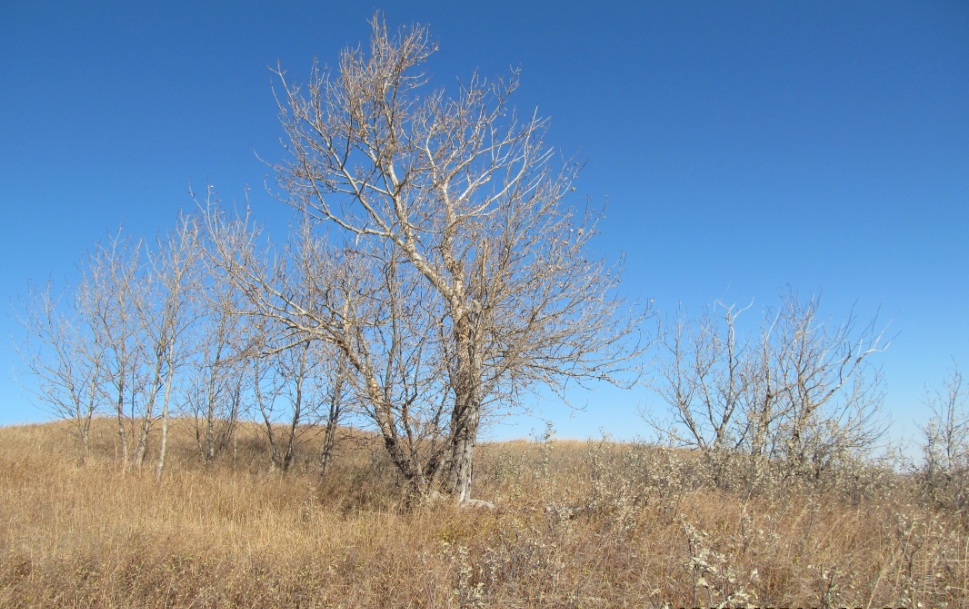 P7 During the construction "boom" years prior to World War I, Nose Creek also made a significant contribution to less reputable facets of the young city's economy. Bordellos built along the banks of the creek helped sustain the local prostitution trade, and further Calgary's growing notoriety as "... the booze, brothel and gambling capital of the far western plains." (James Gray, Red Lights on the Prairies, 1971, p. 125.) Business at the brothels flourished until World War I, when competing downtown facilities that operated near the city's saloons and new army barracks diverted attention away from the less accessible Nose Hill and Nose Creek district.  P8 In the fall of 1896, a young Blackfoot man, Running Weasel, died south of the Bow River. His final request provides eloquent testimony to Nose Hill's enduring role as a sentinel presiding over the passage of time. At his death, Running Weasel asked that he be " ... put where he could see the great city [of Calgary] grow beneath his feet." (Calgary Herald, March 11, 1897). His well-known friend Deerfoot placed his coffin beside Nose Creek.” 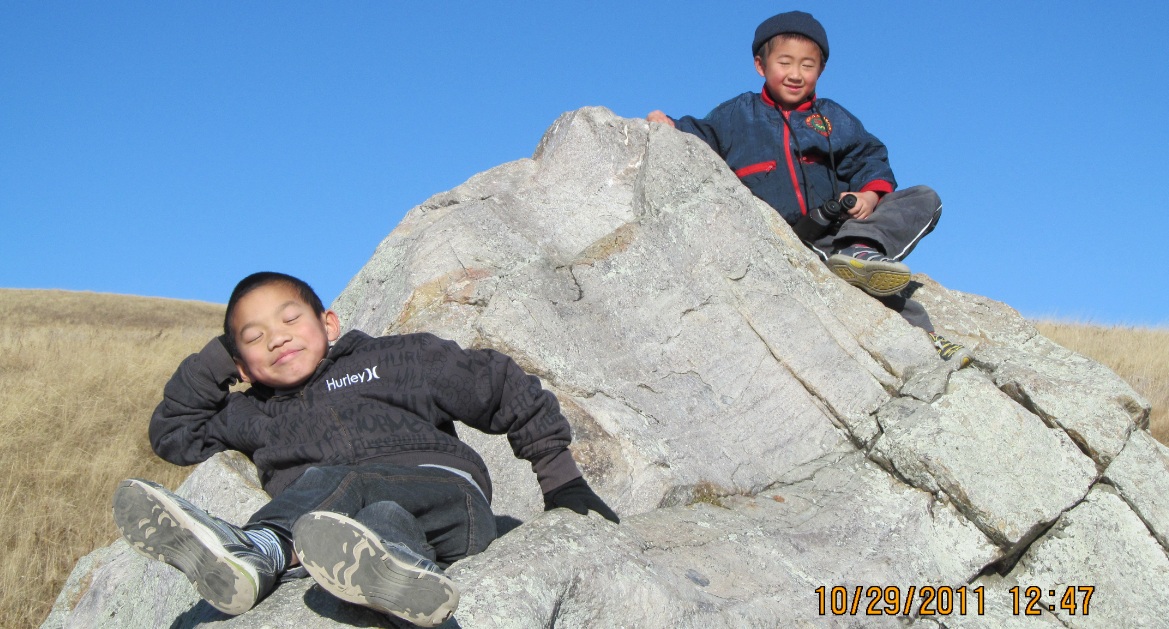 P9 http://www.ucalgary.ca/applied_history/tutor/calgary/nosehill.html  P10 下面是狗狗翻译(Translate):请奏合地读。SORRY。 几千年来,鼻子山站在冰湖卡尔加里沉默地守着夜,一条河流(指弓河,BOW RIVER, 实应为二条大河:弓河和ELBOW,绵羊河涌入后者,THESON 注)从山上汹涌雕刻的方 式,通过老湖底。随后几个世纪以来,鼻子山见证了一个独特的弓河山谷内历史变 迁和河床演化过程。许多人士参观了鼻子山本身其周围的环境。 暴露到经常性的落山风的干燥和变暖的影响,鼻子山上有野牛,这反过来,吸引著 人们到山上的草坡存栏提供了有利的越冬地。公园今天包含了大量的的踢被戒指 - 曾经被用来衡量平原野牛猎人的圆锥形的皮肤住宅石圈。此外,在今天的公园周边 内古老的工具站和石头山,还有不久前刚得到野牛被杀死的证据。 在1900年,欧盟和加拿大在鼻子山地区的定居者描述为一个9英尺厚的骨床和程度英 亩麦弗逊河古力悬崖下的考古残留。建立所有的人左鼻山及周围的考古证据的部落 身份几乎是不可能的。更近的地点,但大部分可能属于Peigan当欧洲人第一次出现 在弓河谷附近的领土,谁占主导地位? Explorer和哈得逊湾公司(HBC)的交易员大卫汤普森在1787年/ 8弓河在Peigan营 地越冬,并在1800年返回到作为西北公司雇员地区。他在今年的杂志中,汤普森鼻 子小山的具体说明。八年前,另一家知名商,HBC,简称:男子彼得菲德勒,也记录 了一个漂移的山Peigan指南。菲德勒的日记条目的详细说明以及如何显著该地区??的 温暖的落山风影响的特点在艾伯塔南部冬季寒冷的气温。 12月菲德勒的访问鼻子小 山一天的温度是摄氏度(58华氏度),一个风和日丽的14度。 约翰和乔治麦克杜格尔,卫理公会传教士,经历了典型的冬季天气,鼻子山狩猎美 洲野牛,大约四十年后,当他们前往。途中他们对1876年1月24日,寒冷的夜晚打猎 营地,老麦克杜格尔,乔治,失去了他的去路。野蛮暴风雪延迟努力寻找失踪的男 子。 2月6日,搜索队终于发现鼻溪东侧麦克杜格尔的冷冻身体。 目前鼻子山公园和附近的地形特征有关的名字反映了欧洲的新人,和欧洲的Peigan贸 易货物的影响。例如,间谍山,鼻子山向西延伸,其现在的名称来自原住民的实践 与远方的同事沟通闪烁高架位置的欧洲贸易镜子。其他影响欧洲人的到来更阴险。 这六个野牛,命运多舛的狩猎游览期间拍摄的卫理公会传教士,仅仅艾伯塔南部的 一次庞大的水牛人口遗留物。 到1879年,野牛牧群从鼻子小山已经消失。当地历史上的一个新的篇章开始了。一 个初出茅庐的欧洲堡垒卡尔加里,加拿大的社区,曾经出现在鼻子小山下方的山谷。 围绕鼻子小山本身的面积在卡尔加里的随后物理警方堡草原城市的转变中发挥了显 著的经济作用。大部分用于兴建气势后,1886年成为卡尔加里的标志性公共建筑的 砂岩来自采石场鼻子上溪经营的当地企业家。从JA刘易斯采石场的石材提供的入口, 帝国银行,并于1909年兴建的新市政厅的一部分。泥瓦匠用材料用车运送到城市从 鼻子小河建立詹姆斯短的学校和卡尔加里的老法院以及。 在建设繁荣年第一次世界大战之前,鼻子小河信誉较低的年轻的城市的经济方面也 取得了重大的贡献。沿小河的银行建妓院,帮助维持当地的卖淫的贸易,并进一步 卡尔加里的增长恶名为... ...酒,妓院和赌博的远西部平原的资本。 (詹姆斯灰 色,红灯在大草原上,1971年,第125页。)商业兴盛,直到第一次世界大战,竞争 市中心设施,靠近城市的轿车经营和新的军营时转移注意力较少访问的鼻子小山的 妓院和鼻子小河区。 在1896年秋天,一个年轻的黑脚人,运行黄鼠狼,死亡的弓河以南。他最后的请求 提供雄辩地证明了鼻子山主持时间的推移,作为一个定点的持久作用。在他的死亡, 运行黄鼠狼问他,.. ...把??在那里他可以看到伟大的城市卡尔加里成长下他的脚。 他众所周知的朋友Deerfoot放在他的棺材旁边鼻溪。 - 卡尔加里先驱报,3月11日,1897年 - 江山如画-穿越洛矶山Spray Lake(喷雾湖)_01 江山如画-穿越洛矶山Spray Lake(喷雾湖)_02 江山如画-穿越洛矶山Spray Lake(喷雾湖)_03 我居住的“小紐約”鎮-長觀鎮_01 我居住的“小纽约”镇-长观镇_02 雪山湖泊熊鹿羊 雪山草场青骢马 雪山湖泊熊鹿羊(续一): 洛矶山绵羊 雪山湖泊熊鹿羊(续二):驼鹿世界 雪山湖泊熊鹿羊(续三):灰熊母子(Grizzly) 雪山湖泊熊鹿羊(续四):冰山来客 |
|
|
 |
 |
| 实用资讯 | |
|
|
| 一周点击热帖 | 更多>> |
| 一周回复热帖 |
| 历史上的今天:回复热帖 |
| 2010: | 雨中漫步 秋天的味道 | |
| 2010: | 古色古香的西安一 | |
| 2009: | 匆匆秋色 | |
| 2009: | 蓝色的诱惑 | |
| 2008: | 柞里子:玻璃世界 | |
| 2008: | 周末扫街(2) - 老人篇 | |



